|
We've had some breakthroughs with our interactive learning over at MeyerFire University that I wanted to share. If your team could stand to improve their skillset and resources, or you simply haven't looked at our MeyerFire University in awhile, I'd very much encourage you to do so. We are working hard to tangibly shake up the way our industry learns, all for the better. Click the image below to see a sneak preview of what's going live on the University in two weeks (April 29). Thanks for being part of our journey, and I hope you have a great rest of your week! Are you going to AFSA next week? Be on the lookout for a nerdy looking guy with a MeyerFire logo on the arm, because we'll be at AFSA42 next week. If you're looking for a booth - we are very nearly at that stage! We (MeyerFire) will have our first official full-fledged booth at the SFPE Annual Conference & Expo in Bethesda, Maryland in October.
Look for us and some show-and-tell on MeyerFire University while there.
I’m excited today to start a series on the who of fire protection. We’ve seen salary surveys in the past. We’ve seen studies on what degrees people have. But – what about the questions that we all really want answered about how we all got into fire in the first place? MY BIG QUESTIONS:
The awesome thing is – because of your help – we now have data to answer every one of these questions – and we will. SURVEY RESPONSES A few weeks ago I posted a survey and we received 443 anonymous responses from you. Thank you! The 443 total responses include:
For this series, and in splitting out the date, I will use these four different categories:
Each of these different groupings seem to each show different trends and tendencies, and I think the takeaways will be better showcased by doing so. THIS SERIES OF ARTICLES Originally I thought one article could summarize the data and give helpful feedback, but after going through and categorizing over 3,100 different data points (yes, I read and categorized all of them), I found a lot of interesting takeaways that I don’t want to skim over. So that said, today’s post is the first in a series where I answer each of these big questions. GROUND RULES FOR THE SURVEY & DATA USAGE A few ground rules that I think are really important here. If you’re less interested in the nuts and bolts – I suggest skipping down to the findings below. #1 LOOKING IN THE REARVIEW FOR CONCLUSIONS ABOUT THE FUTURE First – I like to think I have a good grasp on how to speak about the industry in a way that would resonate with someone new. I like to think that. However, I’m terrible about it. I once talked with a nice lady on a plane who asked what I did and I tried to explain what my version of fire protection engineering is. After we talked for most of the flight I mentioned that the industry has things like smoke control, fire modeling, hydraulic calculations, etc. She said I should always start with that stuff, because what I’d said I did sounded incredibly boring. And she was a nice lady! I’m not great at reading other people’s motivations. Most of us aren’t. So in order to answer questions about – “how do I pitch fire protection?” or “where should I be looking for help?” – I think we first have to look at ourselves and find out who we are. Where did we start? Why did we get into the field in the first place? If we can answer those questions about ourselves, by looking backwards, then that just might be the best possible answer on how we address industry concerns and issues moving forward. #2 I HAVE NO AGENDA HERE Second disclaimer - I didn’t come into this with an agenda. The questions (which can be seen here) do not suggest, prompt, or give examples for any specific end result. #3 ALL QUESTIONS ARE OPEN-ENDED FOR UNPROMPTED ANSWERS Third – each question was open-ended. This is critical. When we’re asking for things like “how did you first hear about fire protection?” or “why did you go into the fire protection field?”, it’s imperative that we don’t suggest ideas. That would poison the well. We needed authentic, unprompted responses. And that’s what we got in this survey. Just as a quick example – if I ask why you went into the field and laid out seven reasons – naturally we’d select the top ones and move on. That’s not truly representative. Each person has their own reasons, and that’s what I wanted to seek out. It’s not good enough to say “career opportunities” as the reason to get into the field, what we actually need to know is what the unprompted reasons are. This point becomes really important when we’ll get into reasons why people get into the industry and where they became aware of the industry. When we get data that says that 19% of all designers and engineering techs got into the field in part because they felt it was “interesting” or 12% thought it would be “enjoyable”, well, those are unprompted sentiments. We didn’t put those words into mouths or give A/B/C/D options – that’s what you, the industry, is telling us about why you chose to get into the field. #4 I'VE CATEGORIZED AND DID MY BEST TO STAY TRUE TO YOUR INPUT Last – it isn’t helpful to have a survey that says 443 different things and just give that back. So, in reading everything that was submitted, I categorized and tried to group responses into themes. I did my best to stay true to the original response in every case. If someone said they thought the salary would be great, or the pay, or the money – well that’s pretty easy to categorize together. Others weren’t as black and white, but I did my best to stay true to your responses and in no cases put words in anyone’s mouths. That’s the last important point before we hop in. So what are we covering today? Today I want to talk on awareness. TODAY'S DATA: HOW DID YOU FIRST HEAR ABOUT FIRE PROTECTION? We, in the fire protection industry, have been described as “niche” and “specialized”. You’ve probably heard many times how people didn’t really know a fire protection industry “existed”. So, how do people first become aware of the fire protection industry? To this, we had a lot of different responses. A summary chart for the raw data from the survey (just to give an idea of the analysis involved) Here's a quick summary of how people hear about fire protection, in total: Few notes on the summary table:
BREAKDOWN BY GROUP Here are breakdowns of this question by different user groups: ARCHITECTURAL & ENGINEERING SPACE For Architecture & Engineering, the top ways people first became aware of fire protection are (139 applicable responses): #1 Learned about it while working in an adjacent industry/space (35%)
#3 Originally wanted to be a firefighter/am a firefighter (9%) CONTRACTING SPACE For the Contracting space, ways people became aware of fire protection are (172 applicable responses): #1 Having family or a relative in the industry (24%) #2 Having a friend or family friend in the industry (19%) #3 Learned about it while working in an adjacent industry/space (19%)
FIRE DEPARTMENTS, AHJs, & GOVERNMENT For Fire Departments, AHJs, and Government entities (63 applicable responses): #1 Originally wanted to be a firefighter/am a firefighter (32%) #2 Learned about it while working in an adjacent industry/space (21%)
INSURANCE, MANUFACTURING, ORGANIZATIONS & CORPORATE CLIENTS For Insurance, Manufacturing, Organizations and Corporate Clients (34 applicable responses): #1 Learned about it while working in an adjacent industry/space (29%)
#3 By Recruiting or Career Fair (18%) ALL RESPONSES For everyone combined, here’s the full rundown of top ways people became aware of fire protection: TAKEAWAYS
So what does this mean? What are the takeaways here? What trends are there? #1: Most People do not start out in Fire Protection. This has been a suspicion for some time. Even counting firefighters as “in the industry”, only 48% of respondents (213) started their first “real” job in fire protection. The remaining 228 respondents started somewhere else. This is commonly spoken around the industry, but I’m not sure that we’ve ever had some data to support it. What does this mean? If we’re looking to source talent, it can’t all come from high school, community college, technical schools or universities. Over half of those in the industry are already in some other field. #2: Contractors Spread the Word via Friends & Family The top ways how those who work for contractors hear about fire protection is overwhelmingly by family, a friend, or relative (43% combined). This is very different than everyone else, where that’s half as likely to happen. What does this mean? For one – kudos to contractors for spreading the word. Those who are now in the industry and work for contractors overwhelmingly heard about it from family and friends. For two – this word-of-mouth among contractors is a very important part in sourcing talent. We’ll get into the data there as we get further along. #3: Don’t Discount the Allure of Firefighting for Industry Awareness It seems like half of my son’s preschool class want to be firefighters when they grow up. My 5-year old daughter wants to be a firefighter for Halloween. I doubt either of them have any that I work in the fire industry. The allure of firefighting is an asset we probably overlook too much. I wouldn’t say that we’re all some version of a pyromaniac in this industry, but I would contend that we’re all at least somewhat fascinated with the spectacle of fire itself. What does this mean? The appeal of firefighting, and as a means that brings people to the industry, actually shows up in the data as far as awareness. I wonder if we couldn’t play that up a little more. So if you’re a student in a technical field and have had some buried fascination with firefighting? Well, here’s a whole industry on it. Join the cause. WHAT'S YOUR TAKE? From the data we’ve looked at today, those are my biggest three takeaways. What do you see? What’s a surprise, and what is not? Does any of this back up your anecdotal experience? Join our discussion here. We've had an extremely busy fall thus far. We had a soft-rollout of the MeyerFire University platform, which has had very positive feedback and is already over 100 users strong (just a few weeks in)! If you're interested in learning more, email me at [email protected] and I'd be happy to share more detail or set up a quick demo for your team. UPDATED NFPA 13R/13D CODE IMPACT CHEETSHEET A couple of years ago I wrote a couple pieces on when NFPA 13R can be used, and I put together a cheatsheet on the code impacts associated with using NFPA 13R and 13D. I'm happy to say that we've now updated the cheatsheet with impacts from the 2021 Edition of the IBC. While it may not yet be the adopted building code for your area, it's still important to compare code impacts with the latest version of the building code, so that you're not building a structure today that is already beneath modern building code standards. Click below to get a copy of the updated cheatsheet: Thanks & have a great rest of your week!
Today is a pretty big day in MeyerFire-world.
I've spoken with contractors, consultants, plan reviewers, educators, insurance carriers, installers, inspectors - and we all continue to come back to one big issue that is holding our industry back right now. We need to develop new talent. For the organizations that are busy and growing - we need more help, and we need knowledgeable help. When we look out even a little into the future, even just 2-5 years from now, the problem will be compounded. Call it the Silver Tsunami, the Experience Exodus, the Golden Goodbye, or whatever other name the kids come up with - our industry has already lost a lot of experience to retirement, and that will only continue as many of the remaining Baby Boomers look to complete their careers. We need to develop new talent. We need something that can resonate with today's Gen Z. We need engagement, and a way to not just train in a two-day or two-week sprint, we need something that can help people new to the industry learn every single day, year-round. Around here we've thought and debated and circled on the idea for a solid couple years. I'm excited to say that we finally have the platform that we have built specifically to help develop new talent in the fire protection industry. We're calling it MeyerFire University: It's an all-new training platform built for those with 0-3 years experience, and covers technical topics like fire suppression, fire alarm, code, life safety, and specialized systems; it covers production topics like plan preparation, drafting, modeling, and plan review; and it covers business & career topics as well. It's everything we wish we had when we started, delivered in bite-sized, highly-visual video clips that are delivered daily and on-demand. Today is our "Soft-Launch". If your organization finds that you also have this need to help train and develop new talent - and you want to join in on this platform early - now is a good time to do so. We've only been in full production on our video content for a month and our platform is growing by five new video modules each week. If you're wanting to be an early adopter - we have a couple ways of saying thank-you and making sure the platform is worth your team's time. To get a quote & more information for your organization, visit:
This has been a dream we've worked towards for years now, and I'm thrilled that it's finally coming to light and can soon start helping teams like yours shine.
Thanks for your time and being a part of the community for better fire protection! It's been something that has been requested here and there about the Toolkit, and I'm happy to say we've finally come around and made this happen. I apologize that its taken way too long to get some of this training out. If you're a Toolkit user (thank you!), we now have a welcome series of weekly emails that explores each tool in a little more depth. Some emails are articles exploring some of the topics, some emails include videos explaining the tools in a little more detail. You can always unsubscribe at any time. To sign up for this free email series, you can do so here: If you don't already have our whole set of tools, check it out here: www.meyerfire.com/toolkit. Happy to say it continues to do well thanks to your feedback and referrals! That's all for today - thanks and have a great rest of your week!
The fire sprinkler database is coming up on its third year in existence; it originally took hundreds of hours of research and plenty of updates, but we're happy to say now that we've upgraded the database to include better search, sort and filter capabilities.
The database is a collection of over 1,500 fire sprinkler models on the market today. Even with a select number of manufacturers, finding just the right type of sprinkler with correct spacing and minimal pressure demands can be tough. The database was built to get answers in seconds - with links directly to manufacturer websites & data sheets. See a quick update video here: The database is part of our Toolkit package. More information about that here. Have a great rest of your week! One of the most-requested tool features was not technical - we wanted color! I'm happy to say that with today's new updated release of the MeyerFire Toolkit we now have just that - different color options to match your company's look: It sounds incredibly simple, but this one took a little while to work out the kinks. At least we rocked out to 90's jock jams while doing the updates, which may or may not have influenced the bright color choices. To get this update, download the latest version of the Toolkit here: www.meyerfire.com/download. If you aren't a Toolkit user, you can get a copy here - www.meyerfire.com/toolkit. Thanks & have a great week! Quick but big post today - we've just completed our most-requested tool to date - I'm happy to announce the System Estimator. We've taken the Remote Area Analyzer (free online, here), added in hose allowances, main losses, elevation losses, riser details, and underground for an estimator tool that allows k-factor, spacing, density, system type, etc with updated system pressure and flow demands, all in real-time! Check out a very rough video snapshot of real-time pressure and flow updates here: If you're a toolkit subscriber - great! Get the new tool right now by clicking the download link below: Have you ever needed to do a quick estimate for a job, and not had a couple spare hours to lay out and calculate a system?
Even for a very basic remote area, laying out sprinklers & pipe, adding fitting, flow, control valve, and backflow losses, a source, and then hydraulically calculating is smoothly - easily can take an hour or more. Now take that same design and change it to a dry system, or at a different density. If you're like me, tweaking sprinkler spacing, k-factors, sprinkler heights, remote area sizes, and c-factors alone can take significant iteration just to get an idea of pressure & flow demand. With this new estimator you can adjust all of those items in one-click, and see the immediate impact of each decision. It's built for estimators, but it can be a very helpful tool for new designers & engineers to quickly grasp design decisions well before a system has to be completely laid out and detailed. Any feedback, let me know! As always, thanks for reading & have a great rest of your week. |
ALL-ACCESSSUBSCRIBEGet Free Articles via Email:
+ Get calculators, tools, resources and articles
+ Get our PDF Flowchart for Canopy & Overhang Requirements instantly + No spam
+ Unsubscribe anytime AUTHORJoe Meyer, PE, is a Fire Protection Engineer out of St. Louis, Missouri who writes & develops resources for Fire Protection Professionals. See bio here: About FILTERS
All
ARCHIVES
July 2024
|
MeyerFire
- Blog
- Forum
-
THE TOOLKIT
- SUBMIT AN IDEA
- BACKFLOW DATABASE*
- CLEAN AGENT ESTIMATOR*
- CLOUD CEILING CALCULATOR
- DOMESTIC DEMAND*
- FIRE FLOW CALCULATOR*
- FIRE PUMP ANALYZER*
- FIRE PUMP DATABASE*
- FRICTION LOSS CALCULATOR
- HANGER SPACER*
- IBC TRANSLATOR*
- K-FACTOR SELECTOR*
- NFPA 13 EDITION TRANSLATOR ('19 ONLY)
- NFPA 13 EDITION TRANSLATOR ('99-'22)*
- LIQUIDS ANALYZER*
- OBSTRUCTION CALCULATOR
- OBSTRUCTIONS AGAINST WALL*
- PITOT CONVERTER
- PLUMBING FIXTURE COUNTS
- QUICK RESPONSE AREA REDUCTION
- REMOTE AREA ANALYZER*
- SPRINKLER DATABASE*
- SPRINKLER FLOW*
- SYSTEM ESTIMATOR*
- TEST & DRAIN CALCULATOR
- THRUST BLOCK CALCULATOR
- TRAPEZE CALCULATOR
- UNIT CONVERTER
- VOLUME & COMPRESSOR CALCULATOR
- WATER STORAGE*
- WATER SUPPLY (US)
- WATER SUPPLY (METRIC)
- UNIVERSITY
- PE Exam
- LOGIN
- PRICING
- OUR CAUSE

MeyerFire.com is a startup community built to help fire protection professionals shine.
Our goal is to improve fire protection practices worldwide. We promote the industry by creating helpful tools and resources, and by bringing together industry professionals to share their expertise.
MeyerFire, LLC is a NICET Recognized Training Provider and International Code Council Preferred Education Provider.
All text, images, and media Copyright © 2016-2024 MeyerFire, LLC
We respect your privacy and personal data. See our Privacy Policy and Terms of Service. The views, opinions, and information found on this site represent solely the author and do not represent the opinions of any other party, nor does the presented material assume responsibility for its use. Fire protection and life safety systems constitute a critical component for public health and safety and you should consult with a licensed professional for proper design and code adherence.
Discussions are solely for the purpose of peer review and the exchange of ideas. All comments are reviewed. Comments which do not contribute, are not relevant, are spam, or are disrespectful in nature may be removed. Information presented and opinions expressed should not be relied upon as a replacement for consulting services. Some (not all) outbound links on this website, such as Amazon links, are affiliate-based where we receive a small commission for orders placed elsewhere.

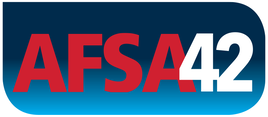
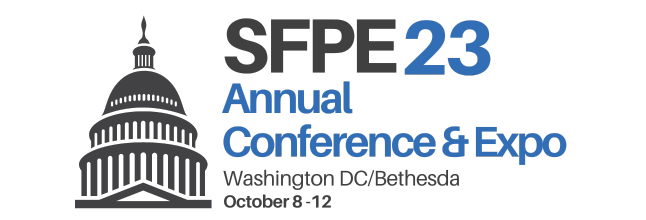

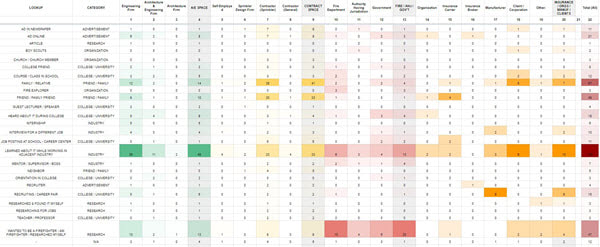
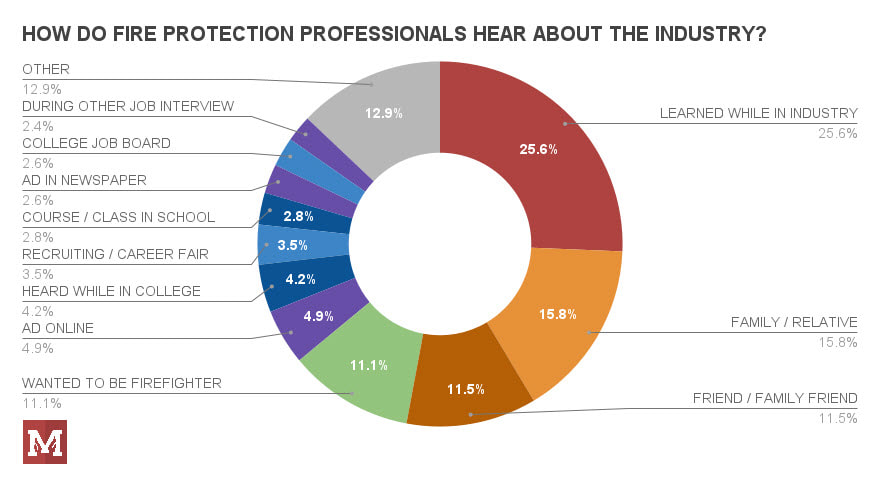
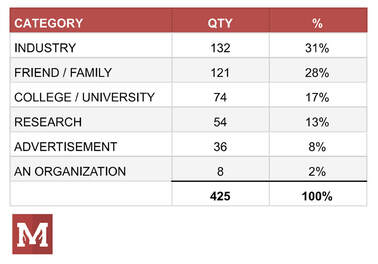
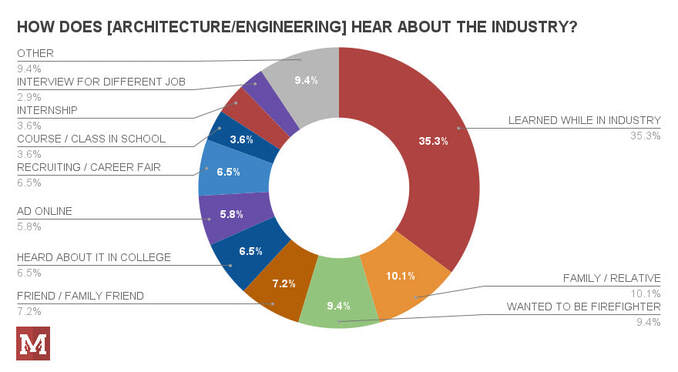
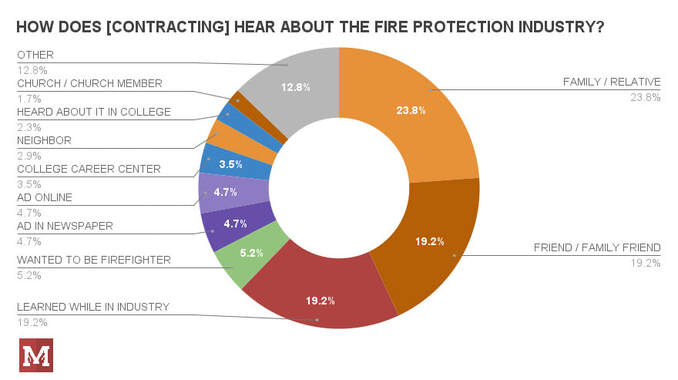
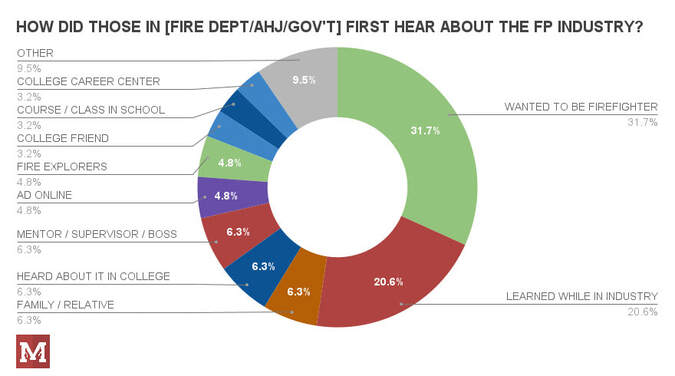
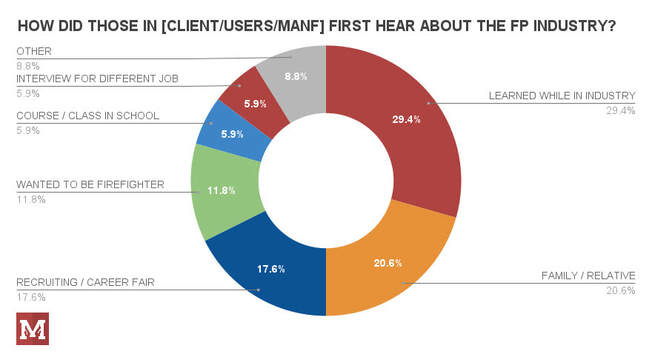
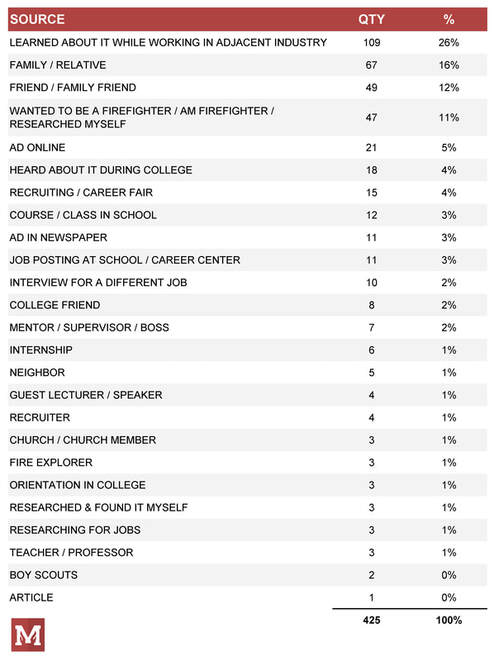
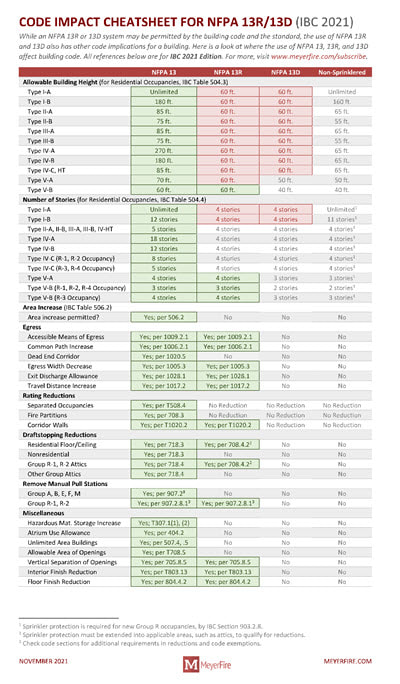
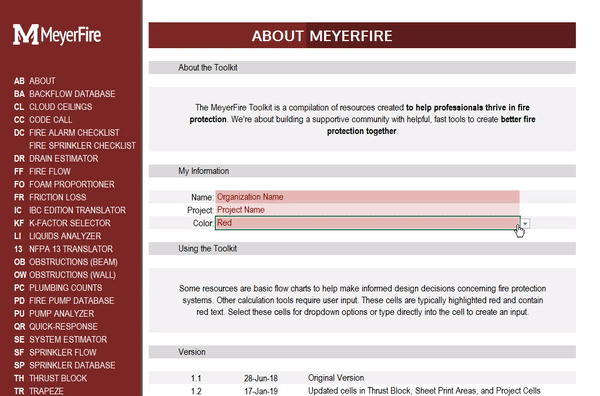

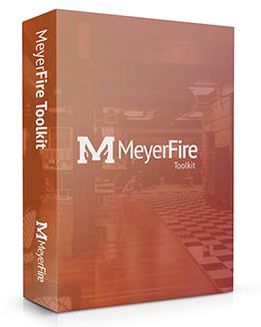

 RSS Feed
RSS Feed
